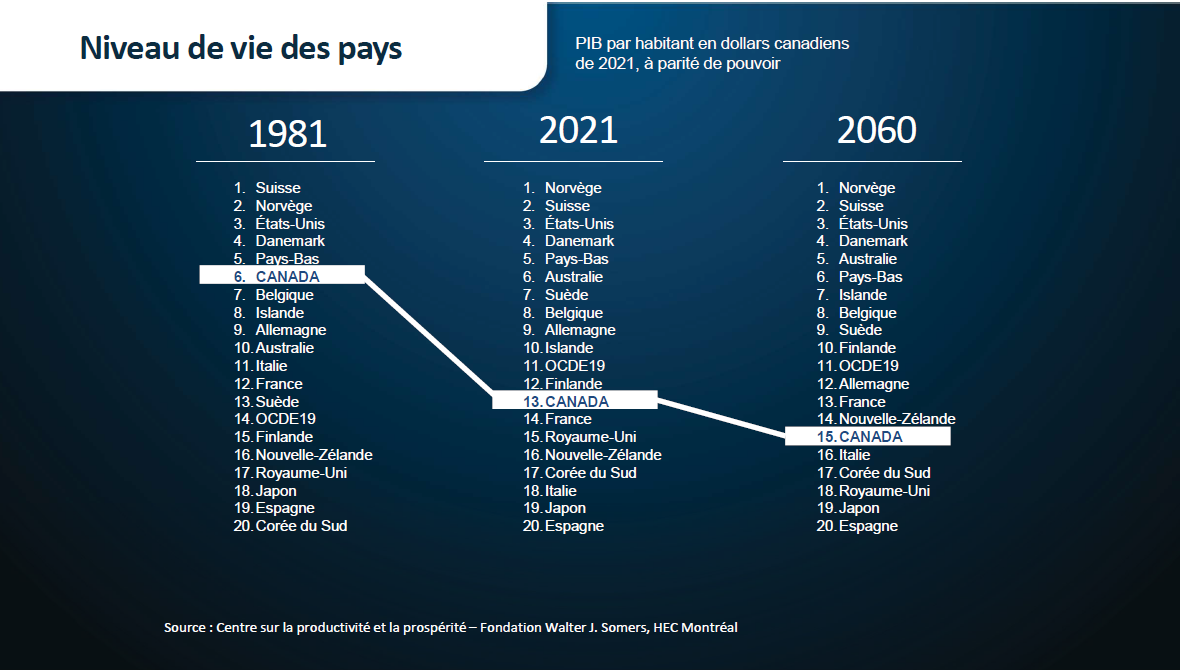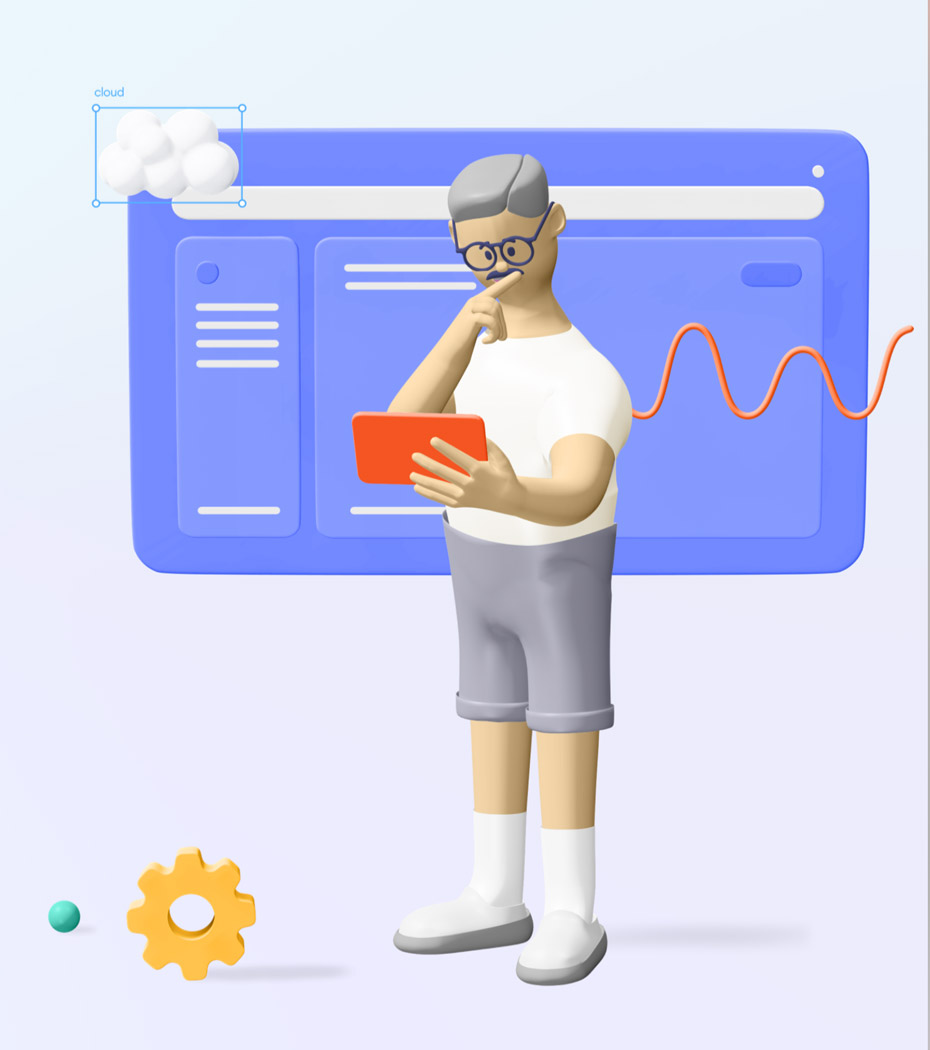Artificial intelligence is often associated with the promise of increased productivity. In fact, a recent survey conducted by the Chambre de commerce et d’industrie de Québec (CCIQ) shows that companies use AI mainly to boost productivity (66%), innovate (55%), and remain competitive in their sector (31%).
Despite AI’s potential, its adoption in Canada remains limited: only 14% of companies are early adopters, while nearly 75% are still hesitant to use it, according to the Canadian Chamber of Commerce.
So how does AI boost productivity, and how does it actually apply in business? In this article, we’ll look at the specific ways in which AI can boost business productivity and increase profitability.
Key productivity issues in Canada
In recent years, Canada has been facing a major challenge: its productivity has fallen in 6 of the last 7 quarters, placing it behind other G7 nations. This poses a risk to our standard of living and future prosperity, to the extent that the Bank of Canada describes the situation as an “economic emergency”.

Canada’s stagnant productivity growth is not new; it stems from various long-standing factors. Firstly, Canadian companies invest less in cutting-edge technologies, such as artificial intelligence, than their counterparts in other countries, which limits their capacity for innovation and efficiency.
In addition, Canada faces challenges in terms of skilled labor: an aging population and a shortage of talent are limiting opportunities for process optimization and innovation. Finally, small and medium-sized enterprises (SMEs) form the backbone of the Canadian economy. They are often reluctant to adopt cutting-edge technologies due to a lack of resources or appropriate support.
In this context, artificial intelligence appears to be a key solution. Its adoption can not only help Canada close the productivity gap, but also reinforce its status as a world leader in innovation, drawing on a rich and growing ecosystem of research centers, renowned universities and pioneering companies.
Investing in AI would enable Canadian companies to overcome some of today’s obstacles, modernize their operations, increase efficiency and compete with international rivals, positioning themselves at the forefront of tomorrow’s digital economies.
How AI boosts productivity
To increase productivity within a company, it’s essential to start by identifying the areas where it is wasting time, being inefficient or incurring financial losses. This understanding of the issues at stake makes it possible to pinpoint areas for improvement. And this is where artificial intelligence steps in strategically!
By applying AI to inefficient or costly processes, it becomes possible to streamline operations, automate repetitive tasks, and optimize resource allocation. In short, a good understanding of the initial challenges enables the implementation of targeted AI solutions, which not only increase productivity, but also reduce costs and waste for the company.
At this stage of your reading, the idea of integrating AI is probably already on your mind! Here are a few concrete examples of AI applications to boost productivity.
1. Automation of repetitive tasks
Take a moment to identify the repetitive, low-value-added tasks in your departments. Once identified, explore automation options to free up time and allow your teams to focus on what really matters.
In the human resources field, for example, we have designed an augmented recruitment solution capable of automatically associating job descriptions with CVs. This process, which takes just a few seconds, saves valuable time normally spent manually analyzing CVs. What’s more, it enables us to quickly reassign candidates, even if the profile they’re looking for changes during the recruitment process (which often happens in the recruitment world!). Also, the tool also automates note-taking during interviews, enabling recruiters to concentrate fully on the candidate rather than on the note taking. Ultimately, this translates into salary savings on the time spent by recruitment teams, greater efficiency through automation, and increased productivity.
In the human resources field, Walmart, with its 1.6 million employees, has integrated an AI app called “My Assistant” that answers staff questions like “Do I have dental coverage?” and summarizes meeting notes. Launched in 2023, this technology aims to eliminate repetitive tasks so that employees can focus on higher value-added activities. According to Donna Morris, Walmart’s HR Director, the company expects a “considerable increase in productivity” thanks to this approach.
Also, it’s interesting to note that the automation of repetitive tasks leads teams to focus on value-added tasks, thereby increasing their well-being. You guessed it: an increase in well-being leads to an increase in productivity. Two birds with one stone, as they say!
2. Trend and demand forecasting
Thanks to its ability to analyze a multitude of data in record time, AI becomes a valuable ally in understanding and anticipating trends. For example, AI can be used to predict risk factors for workplace incidents and accidents, enabling companies to implement preventive measures. Not only does this translate into significant savings in occupational health and safety (OHS), but employees are better protected. Anticipating these risks not only offers worker safety, but also improves productivity by reducing incident-related interruptions, thus contributing to a culture of prevention within the company. AI doesn’t just increase productivity or financial gains; it can also have a real impact on humans.
3. Supply chain optimization
The supply chain, essential in diverse sectors such as transportation and healthcare, can now benefit from accurate predictions and constant optimization thanks to AI. Imagine being able to adjust your delivery routes to reduce lead times. Predict peak demand in emergencies to allocate staff optimally. AI not only streamlines operations, but also responds to needs in real time, guaranteeing more efficient service and optimal resource management.
An excellent example is our collaboration with Urgences-santé, where we help them anticipate demand and proactively deploy their paramedic teams. Thanks to our AI solution, Urgences-santé can analyze historical data, real-time information and external factors such as the weather to predict periods of high demand. This enables better planning of team availability, improves response times, and ensures that resources are deployed where they are needed most, helping to optimize operational efficiency.
4. Data analysis for faster decisions
We’ve already mentioned it, but AI has this unique ability to analyze a phenomenal amount of data in record time – something impossible for a human. When it comes to making informed decisions, data is essential for choosing the best options. Take scheduling, for example: AI can evaluate a multitude of factors in seconds to generate an optimal schedule. Without AI, this task can take hours, and if something unexpected happens, the entire schedule often has to be revised manually. With AI, an adjustment can be made instantly, enabling immediate responsiveness to the unexpected and ongoing optimization of human resources. This not only gives greater flexibility, but also guarantees more efficient workforce planning, tailored to actual needs.
5. Personalizing the customer experience
AI is already part of our daily lives, often without us even realizing it. If you’ve ever received product recommendations on Amazon or playlist suggestions on Spotify, you’ve experienced AI in action. Amazon, for example, uses algorithms to analyze your previous purchases and online behavior, to suggest products that match your tastes. Similarly, Spotify suggests songs or playlists tailored to your musical preferences. These examples, with which almost everyone is familiar, show how AI can personalize the customer experience, strengthen loyalty and improve sales performance.
Artificial intelligence, a driver of productivity
With AI now within our grasp, we’re entering a new era. These application examples show that AI is no longer just a support tool: it has become an essential driver for improving efficiency, reducing costs and boosting productivity in a variety of sectors, thereby supporting the growth of the Canadian economy.
If you’re ready to take the plunge and harness the potential of AI to propel your productivity, Airudi is here to help you identify the best use cases and maximize your impact. We’ve already helped many companies adopt this breakthrough – why not yours?
Pape Wade
Co-founder and CEO, Airudi
pape.wade@airudi.com










